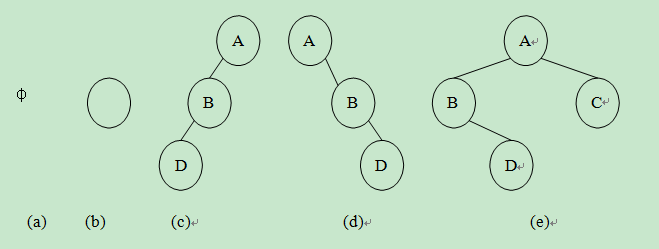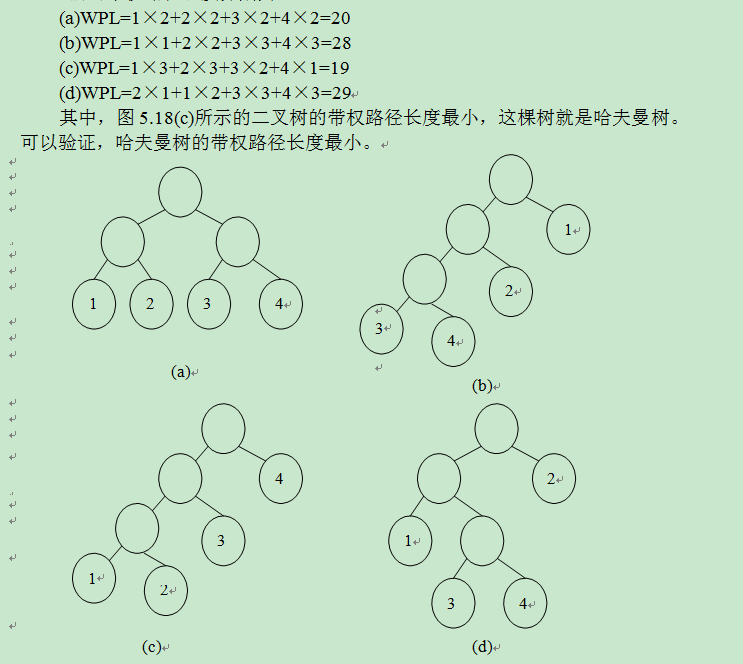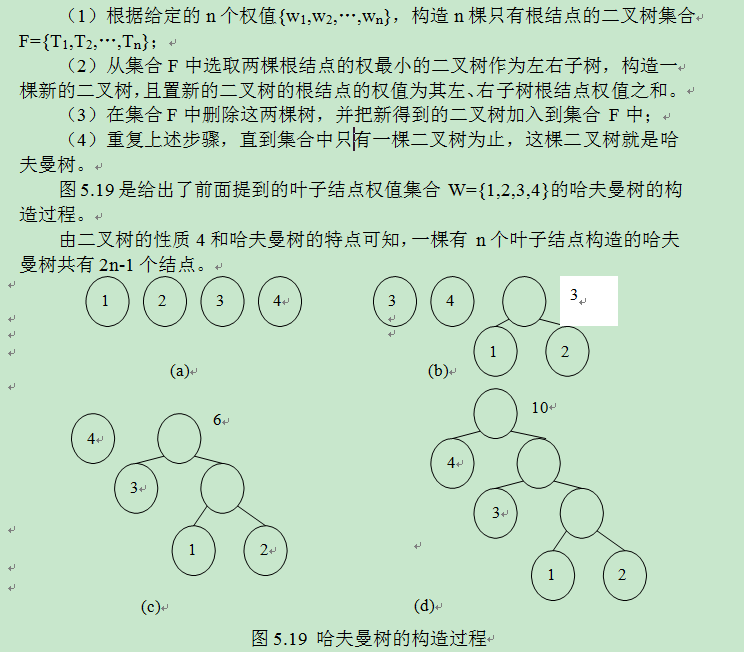C#数据结构_树
树的定义是递归的,用树来定义树。因此,树(以及二叉 树)的许多算法都使用了递归。
结点(Node):表示树中的数据元素。
结点的度(Degree of Node):结点所拥有的子树的个数。
树的度(Degree of Tree):树中各结点度的最大值。
叶子结点(Leaf Node):度为 0 的结点,也叫终端结点。
结点的层次(Level of Node):从根结点到树中某结点所经路径上的分支 数称为该结点的层次。根结点的层次规定为 1,其余结点的层次等于其双亲结点 的层次加 1。
二叉树的形态共有 5 种:空二叉树、只有根结点的二叉树、右子树为空的二 叉树、左子树为空的二叉树和左、右子树非空的二叉树。

满二叉树(Full Binary Tree):如果一棵二叉树只有度为 0 的结点和度为 2 的结点,并且度为 0 的结点在同一层上。
完全二叉树(Complete Binary Tree):深度为 k,有 n 个结点的二叉树当且仅当其每一个结点都与深度为 k,有 n 个结点的满二叉树中编号从1到n 的结点一一对应时






二叉树的二叉链表存储结构:一个数据域和两个引用域。


不带头结点的 二叉树的二叉链表的类 BiTree<T>类的实现:

public class BiTree<T> { private Node<T> head; //头引用 //头引用属性 public Node<T> Head { get{return head;} set{head=value;} } //构造器 public BiTree() { head = null; } //构造器 public BiTree(T val) { Node<T> p = new Node<T>(val); head = p; } //构造器 public BiTree(T val, Node<T> lp, Node<T> rp) { Node<T> p = new Node<T>(val,lp,rp); head = p; } //判断是否是空二叉树 public bool IsEmpty() { if (head == null) { return true; } else { return false; } } //获取根结点 public Node<T> Root() { return head; } //获取结点的左孩子结点 public Node<T> GetLChild(Node<T> p) { return p.LChild; } //获取结点的右孩子结点 public Node<T> GetRChild(Node<T> p) { return p.RChild; } //将结点p的左子树插入值为val的新结点,原来的左子树成为新结点的左子树 public void InsertL(T val, Node<T> p) { Node<T> tmp = new Node<T>(val); tmp.LChild = p.LChild; p.LChild = tmp; } //将结点p的右子树插入值为val的新结点,原来的右子树成为新结点的右子树 public void InsertR(T val, Node<T> p) { Node<T> tmp = new Node<T>(val); tmp.RChild = p.RChild; p.RChild = tmp; } //若p非空,删除p的左子树 public Node<T> DeleteL(Node<T> p) { if ((p == null) || (p.LChild == null)) { return null; } Node<T> tmp = p.LChild; p.LChild = null; return tmp; } //若p非空,删除p的右子树 public Node<T> DeleteR(Node<T> p) { if ((p == null) || (p.RChild == null)) { return null; } Node<T> tmp = p.RChild; p.RChild = null; return tmp; } //判断是否是叶子结点 public bool IsLeaf(Node<T> p) { if ((p != null) && (p.LChild == null) && (p.RChild == null)) { return true; } else { return false; } }
二叉树的遍历:DLR(先序遍历)、LDR(中序遍历)和 LRD(后序遍历),层序遍历(Level Order)。
哈夫曼树(Huffman Tree),又叫最优二叉树,指的是对于一组具有确定权值 的叶子结点的具有最小带权路径长度的二叉树。







